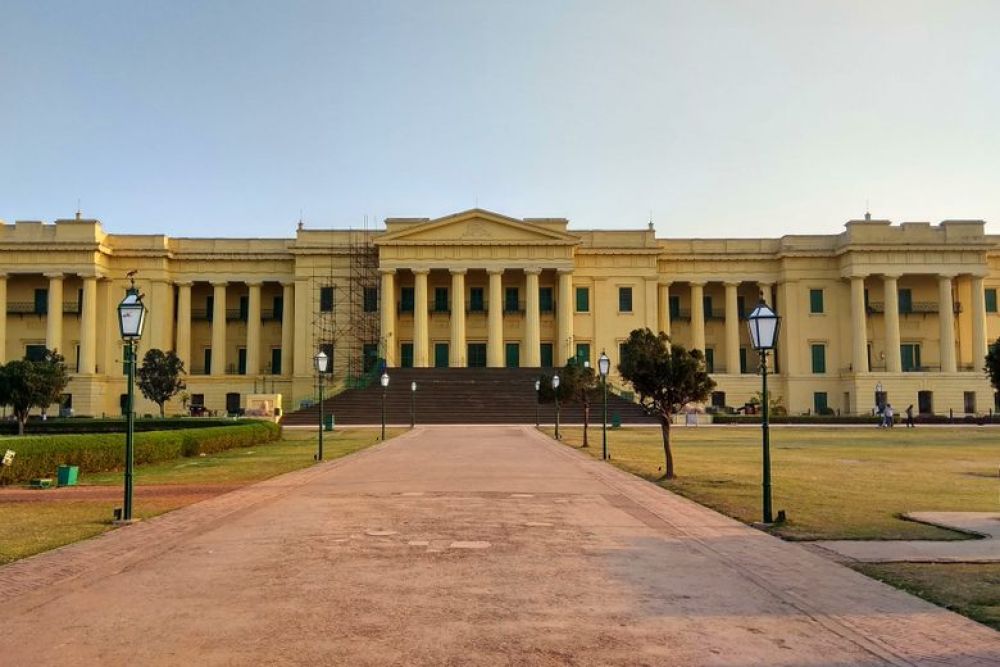

The Hazarduari Palace Museum located in the historic city of Murshidabad in West Bengal is a splendid example of Indo-European classical architecture. The palace has long been a significant attraction for tourists, historians, and art enthusiasts alike.
The construction of the Hazarduari Palace, which translates to the "Palace with a Thousand Doors," was initiated in the 19th century under the reign of Nawab Nazim Humayun Jah. Designed by the famed British architect Duncan MacLeod, the palace was completed in 1837 and served as the seat of power for the Nawabs of Bengal. It was during the British Raj, a time of great significance for Indian history and architecture. The palace is said to have 1000 doors, out of which 100 are false, designed to confuse intruders.
In the late 19th century, the palace was transformed into a museum to preserve and showcase the rich heritage of the region. The Hazarduari Palace Museum was formally opened to the public in 1985, displaying an exquisite collection of artifacts, paintings, and furniture, providing insights into the lifestyle of the Nawabs. It houses an array of galleries, including the Armoury Gallery, the Portrait Gallery, and the Durbar Hall.
The museum has steadily risen in prominence as a tourism spot since its inception. Initially serving an educational and cultural hub for local visitors, it now draws a large number of tourists from all over the world, eager to witness the grandeur of the edifice and delve into the historical narratives held within its walls. The inclusion of the site in the West Bengal Tourism's circuit has further bolstered its status as a must-visit destination for historical tourism in India.
In recent years, the Murshidabad region, with Hazarduari Palace Museum at its heart, has embedded itself firmly on the path of experiential and educational tourism. Tour operators now offer package tours that include a dive into the local culture, cuisine, and traditional arts and crafts workshops. Heritage walks and festivals have also become a part of the regular tourism offerings, aiming to enhance the visitor experience and bring to life the rich tapestry of history that Murshidabad is known for.
The museum is open to the public six days a week, remaining closed on Fridays. Visitors can explore the vast array of galleries, where they can see an impressive array of exhibits ranging from priceless paintings to intricate ivory work. Adjacent to the palace, the Nizamat Imambara, clock tower, Madina Mosque, and the Bacchawali Tope canon are additional historical sites that continue to attract visitors.
The Hazarduari Palace Museum stands as both a cornerstone of Murshidabad’s heritage and as a beacon of the enduring allure of India’s historical landmarks. As international travel continues to rebound, and the global interest in immersive cultural experiences grows, the future of tourism at this iconic site looks both bright and promising.